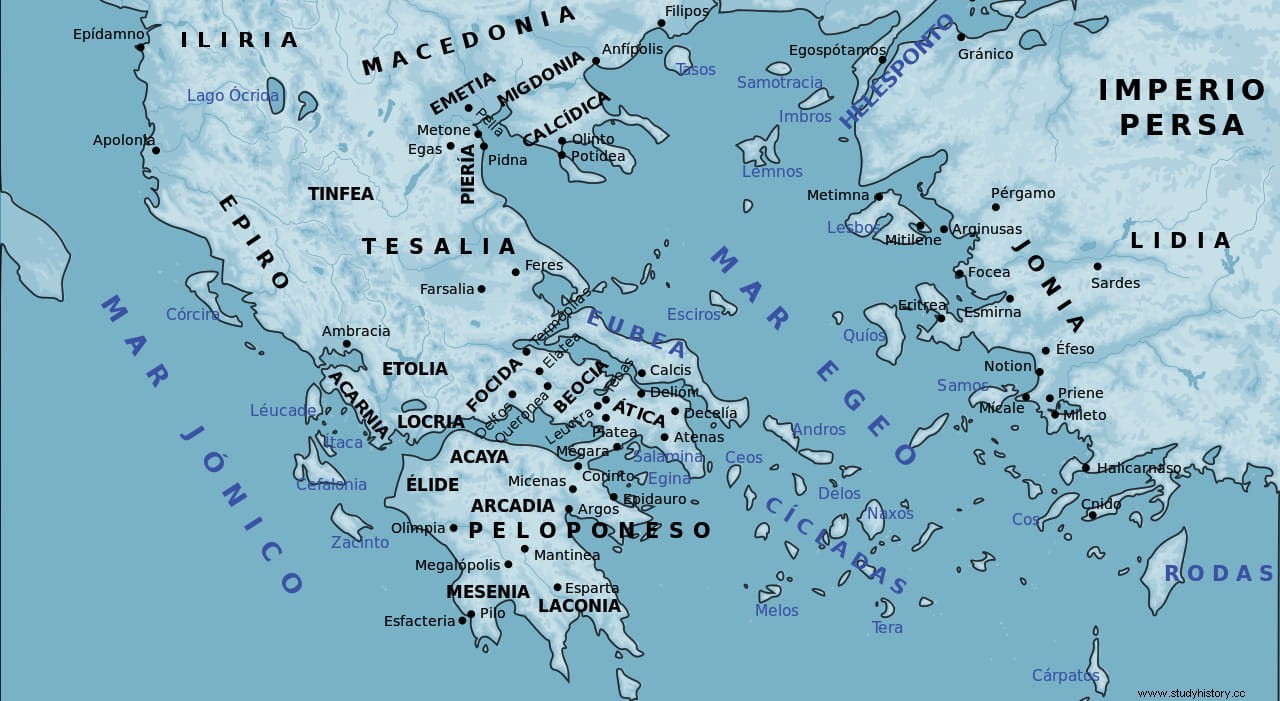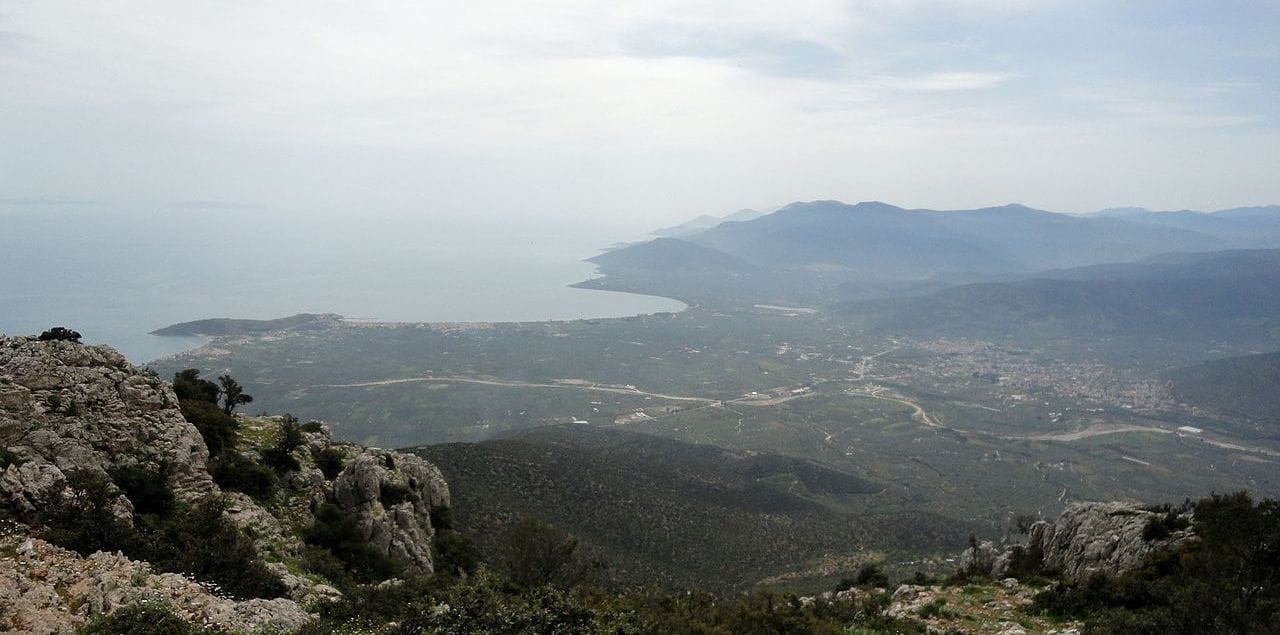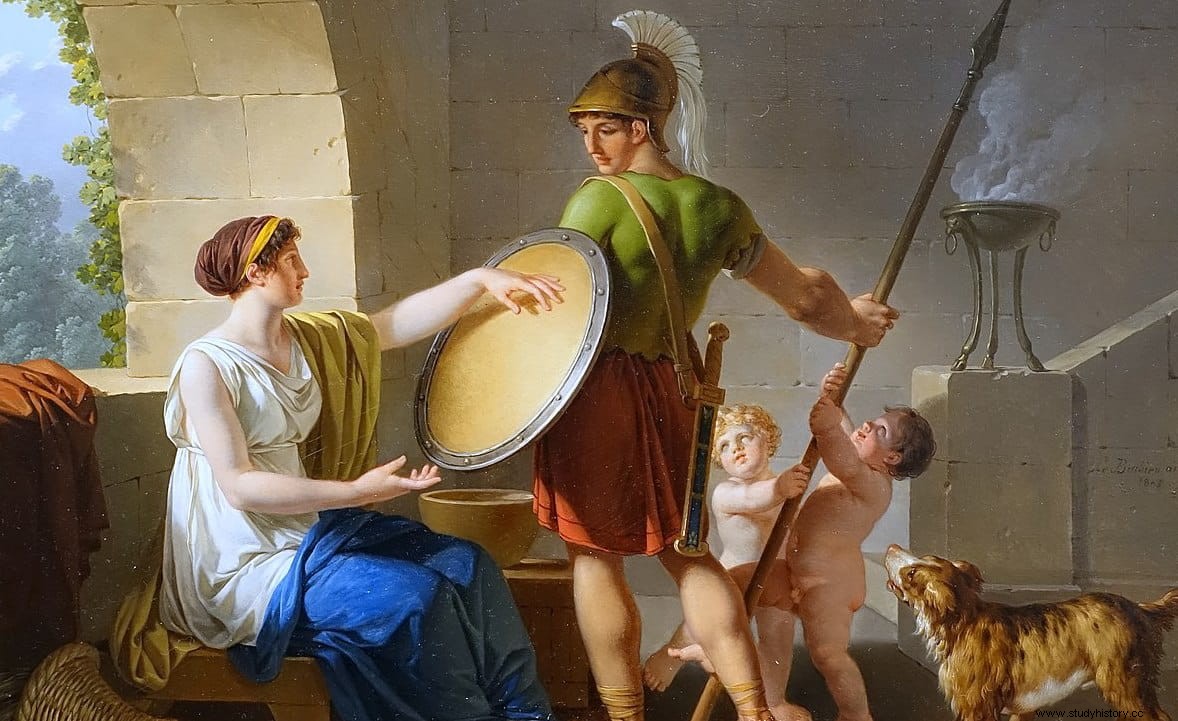If we talk about three hundred Spartans it is almost inevitable to think of the army of Leonidas and the numantine resistance of him in the Thermopylae Pass , along with his allies, to try to stop the advance of Xerxes' Persian invaders. Today there is no one who is unaware of this history, at least in general terms, thanks to the power of cinema. However, this time we are going to talk about other Spartans. There were also three hundred, but their enemies did not come from Persia but were Greeks like them; of Argos.
In fact, this chapter took place in the year 545 BC; therefore, before the other, which occurred in the year 480 BC, in the context of the Persian Wars. To understand it, one must be aware that Ancient Greece lacked unity and was made up of a multitude of city-states that used to be at odds, grouped by alliances, by territorial and commercial hegemony. This unstable situation would explode later, during the Peloponnesian War, but there were sporadic previous episodes. The Battle of the 300 Champions, which pitted Sparta and Argos was one of them.

The casus belli it was the control of the plains of Tirea , an area of the Peloponnese peninsula that was part of Arcadia and that served as a stopper between the Laconia and the Argolis , in addition to having a valuable outlet to the sea. Thus, a strategic terrain that, consequently, both states coveted. Its occupation by the Spartans led the Argives to go to war, reviving the long tradition of fighting between the two for that emotional. Until then, periodic skirmishes and a battle in 669 BC. (Hysias, in the context of the Second Messenian War, in which a phalanx was first seen) had given Argos an advantage , because Sparta was not yet the military power that it would later be.
However, both sides were exhausted with that constant bloodletting, so they agreed to solve their rivalry in a different way:a combat in which, instead of complete armies, only two contingents of three hundred chosen men would fight. strong> . The winner would own the plains of Tirea and thousands of lives would be saved. That yes, the contenders should be used thoroughly, without margin for rest or attention to the wounded. It would be like a duel to the death and the weakest would lose to the last man.

The two armies withdrew to avoid incidents and on the appointed day, according to Herodotus in his work The Nine Books of History, the selections were presented in the field; they can be called that way, since each one was made up of the best hoplites . They were the champions who, in the end, gave the battle its name, this being an advanced version of single combat , which in other times and other cultures, without becoming frequent, were not rare either:there are well-known references -regardless of their historicity-, such as those of David and Goliath, Hector and Ajax, Turnus and Aeneas or Laro and Scipio.
After the corresponding religious sacrifices, Argives and Spartans fought bloodily until exhaustion. When the last Spartan fell, two of their adversaries were still standing and, exhausted, they made a quick hunt to ensure their victory and started back to Argos to spread the good news. But Alcenor and Cromio - such were their names - made a mistake, for a Spartan hoplite named Otríades he was badly wounded, although still alive. With both Argives gone, he was the last one left on the battlefield and thus the true winner. Otríades died there, but he had time to notify the helots in charge of carrying his equipment or, according to legend, to write the situation on a shield with his own blood .

One version says that the hoplite committed suicide knowing he was the only survivor, because of the shame that this entailed; others believe that his condition was already critical and that is why the Argives did not realize that he was still breathing. Also that in a last effort he placed his dead comrades in formation and he took his place in it, finding him like that. In any case, while Argos was declared victorious before the rest of Greece, Sparta did the same arguing that Otríades had died by his own hand, not by an Argive sword. Put another way, the Battle of Champions didn't solve anything.
Laconia raised an altar to Nike (goddess of victory) in the place where her last man died and the Argolis felt insulted by it; consequently, both sides again sent their armies to kill each other and this time all participating. Interestingly, Herodotus says that the Lacedaemonian fashion He was born with a beard without a mustache and long hair at that time, with the promise not to cut it until he was victorious; In reality, it was a survival of the archaic era to identify the nobility (in this sense, Aristotle considered that long hair was hardly compatible with manual work).
In the end Sparta prevailed , which over the following years conquered Tirea and began to take off as a power, conquering the cities of Figalia, Hira, Pilos, Modona and Tegea, even entering the Argolis and storming the capital, where they carried out the brutal extermination of their male population to make sure they would never cause trouble again. This was the case until another conflict arose in 420 BC, already in the midst of the Archidamic War (the first of those grouped under the denomination Peloponnesian Wars); the argives again proposed a challenge for a new single combat , but by then Sparta was a power and had nothing to gain by fighting like this, so she declined the offer.
